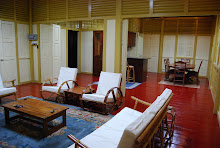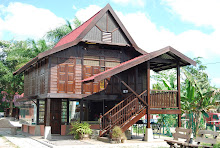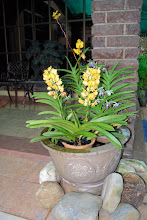
If asked what is the best place to visit in this world, I would definitely say Mekkah as my only choice. Indeed I think many would pick it as their only and most favorite place. The answer cannot be wrong since what other places in the world are visited more than several times? Muslims all over the world would make their obligatory visit once and then strive hard again to make the second and subsequent visits. The pull is strongest for reasons known to the visitor himself.

The imposing interior of Al Haram as on the first floor
My father-in-law at his octogenarian age has just returned home from his umrah visit to Mekkah and Madinah. This would be his one score (less one) visit to the Islam's holy land. Not that he has promised himself a visit every two years or so if possible but he has also with Allah's will taken friends or relatives along for the visit too.
On this occassion all fifteen except two were on their repeat visits to the two holy cities. What would be the attraction or the pull? Surely no other places in the world would see people visiting it again and again. Coincidently each time we took leave to come home, we would say our prayers requesting ardently that that other visit would follow.
I would recalled two specific prayers that we say upon leaving the holy cities. One at Madinah and the other at Mekkah.
'Doa Ziarah Selamat Tinggal di Madinah'
" Ya Allah! Janganlah Engkau jadikan ziarahku ke tempat mulia ini sebagai kali terakhir. Kurniakan bagiku kepadanya ziarah untuk sekalian kalinya dalam kebajikan, kesejahteraan, kesihatan dan keselamatan"
Doa Tawaf Wida'
"..... Ya Allah! Murahkan rezekiku supaya dapat kembali menziarahi Baitullah berulang kali dengan bertaubat, beribadat, mengucap syukur dan puji-pujian ....."
To know the correct answer then go for the visit yourself. You would find within you why others so willingly want to make repeat visits. Insya Allah.
Obligingly most visitors would spent invariably seven to ten days at Mekkah and at least three to four days at Madinah. By any measure it is exclusive since no traveller would give that much of the time to be at one place if he was visiting places for leisure. But Mekkah and Madinah are extraordinary places. Some would stay indefinitely if so allowed.
.
 One of the latest commercial centres at Mekkah found at Zam-Zam Towers meeting the needs and wants of the many international vistors that come to the city throughout the year.
One of the latest commercial centres at Mekkah found at Zam-Zam Towers meeting the needs and wants of the many international vistors that come to the city throughout the year.  Another view of the imposing interior with two main towers seen in the background and the jemaah reading the Koran as they waited for the call of Isyak prayer.
Another view of the imposing interior with two main towers seen in the background and the jemaah reading the Koran as they waited for the call of Isyak prayer.





























